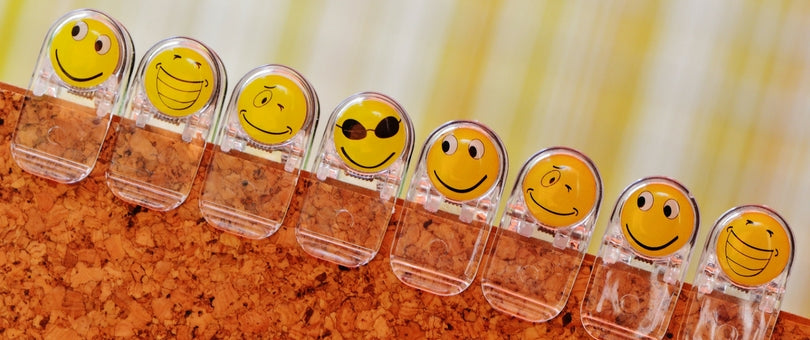Company
-
How Can I Pitch My Products to Get Them Stocked in Retail Stores?
If you've been wondering how you can get your products stocked at existing retailers, you're not alone.
After we published an article about how to handle working with big retailers, we got a great question: how can you pitch your products so that retailers want to carry your stuff?
We got in touch with a company that managed to get stocked in national chains in just a few years to help answer the question.
-
Get Your Store Ready for the Holidays: 40+ Apps, Ideas, and Examples

However you define “holiday”, you can’t ignore that there’s a certain buzz in the air. The season is upon us.
You may have survived the biggest shopping weekend of the year (and you killed it), but shoppers are still scrambling to buy last minute gifts, pushing the limits of your shipping deadlines.
If your customers are celebrating Ramadan or Hanukkah or just looking forward to popping the New Year’s cork, they’re in a buying spirit this month. You can make the most of the holiday shopping season by making a few tweaks to your store design, marketing, and collections, even if you don’t sell overtly festive products.
The Shopify App Store is full of handy integrations (some free) to help superpower your business at any time of year. We’ve curated a list of holiday-specific apps and tools, plus ideas and examples to implement today.
-
How Paypal Fees Work with Shopify Payments

Paypal is one of the largest online payment systems with 227 million active accounts around the globe. It’s also a popular option for accepting payments among online sellers.
But as with any payment system, there are fees associated with it that you’ll need to factor into your pricing and the cost of running your business. Luckily, Paypal works well with Shopify Payments for offering multiple ways for your customers to checkout without having to worry about stacking fees.
-
6 Persuasive Product Photography A/B Tests to Run
Before you buy something in a brick and mortar store, you interact with it. You test drive cars, you touch blankets, you smell candles.
In ecommerce, that interactivity is missing, which puts a lot of pressure on product photos to fill the void.
Fortunately, your brain can process images in as little as 13 milliseconds. It can remember more than 2,000 images with 90% accuracy over the span of a week.
So, product photography can be used to persuade, influence, motivate, and direct attention. Product photos are lean, mean selling machines and they deserve your undivided attention.
-
Turn Showrooming Into Sales: Introducing Buy Online for Shopify POS
 As holiday buying heats up, the growing consumer practice known as showrooming — when customers visit a retailer to check out an item, only to buy it later online — can challenge many retailers.
As holiday buying heats up, the growing consumer practice known as showrooming — when customers visit a retailer to check out an item, only to buy it later online — can challenge many retailers.We get it. Showrooming might seem like a difficult obstacle to overcome. But retail done well, especially with thoughtful merchandising and knowledgeable sales staff that represent your brand, should be rewarding for both shoppers and your bottom line.
So, how can you embrace challenges like showrooming and actually make it work for your retail business?
Shopify is rolling out a new feature to tackle this precise problem. Buy Online for Shopify POS helps retailers turn shoppers using their phones in-store from a threat to a way to boost sales.
-
Emotional Persuasion 101: What It Is, Why It Matters and How to Use It
Understanding psychology is the key to understanding decision-making processes. Often, what you think you know about how decisions are made and why conversions happen isn’t so black and white.
Many people think a logical argument with facts, figures and product specs is the best (and only) route. The truth is that the brain is quite emotional.
A better understanding of how the brain makes decisions and how emotional persuasion works will help you improve conversions (and your bottom line).
-
How a Jewelry Business Generates 76.8% of Orders Selling on Amazon with Shopify
Sarah Tripp and David Shoap, husband and wife, created Sarah’s Treats and Treasures when a unique inventory opportunity caught their eye: hand-crafted pins made right in the U.S.
Finding the perfect product to sell? Check. Selling it? Well, that’s where things got a little fuzzy.
This was before Sarah set herself up with a Shopify store; she didn’t actually even have a website yet. Instead, they got all of their listings up on Amazon and were accepted in the Jewelry category.
From some Amazon listings to a thriving brand, we’ll look at how Sarah and David conquered Amazon (and then scaled with Shopify). And, of course, what you can learn from them so you too can dominate the Amazon Channel.
-
New Features, New Categories: Selling on Amazon with Shopify Just Got Easier
With the Amazon sales channel, you can sell on the world’s largest online marketplace simply and conveniently through Shopify. Since the channel’s launch, Shopify store owners have made millions in sales and fulfilled tens of thousands of Amazon orders with Shopify, making it one of the fastest growing sales channels.
Today, we’re announcing the ability to create listings in seven new product categories directly from Shopify, and support for the Amazon Brand Registry.
Now, more Shopify store owners can seamlessly sell on Amazon’s massive marketplace. You can create Amazon listings, manage inventory, and fulfill orders all from the comfort of Shopify.
-
6 Bots to Help Automate Your Business (and Get More Done, Faster)

Bots have evolved beyond their chatbot origins, communicating with us through voice, learning and adapting to our needs, and even talking among themselves. Check out our list of 8 bots, bot integrations, and automation tools that work with your Shopify store to help you get more done without actually cloning yourself.
-
13 Cognitive Biases in Ecommerce (and How to Use Them to Sell More)

We like to think we’re rational people making rational decisions.
We pore over the data in our analytics dashboards, looking for trends among our customers. We carefully weigh the pros and cons of our own purchase decisions, arriving neatly at a logical choice.
Right? Wrong.
The truth is that the human brain is incredibly complex, contextual and emotional. There are dozens and dozens of cognitive biases, for example, influencing every decision you and your customers make.
Here’s everything you need to know about some of the most common biases (and how to use them to your advantage).
-
13 Persuasion Techniques to Convince Ecommerce Visitors to Buy More

When running an ecommerce store, it’s easy to forget that visitor #3456 is a real, live person. A person subject to cognitive biases, persuasion techniques, psychological theories, etc.
Having a basic understanding of some of the most popular persuasion techniques can put you ahead of the competition. You’ll have insight into how you can turn theory into practice, science into cold, hard cash.
Here are 13 persuasion techniques that will give you an unfair advantage in the most important battlefield of all: the human brain.
-
How to Improve Your Ecommerce Store's User Experience (and Pay Less to Sell More)

Evan Williams, co-founder of Twitter, once said, “UX is everything. It always has been, but it’s undervalued and underinvested in.”
Ecommerce UX is no different. Stores pour thousands into Facebook ads, into product research, into design. Yet, UX goes undervalued and underinvested in.
It’s a big problem. One that affects your visitors, your customers, your profits. One that affects you. Because if you’re not optimizing your ecommerce UX yet, know that your competitors are.
- Previous page
- Page 6 of 9
- Next page









